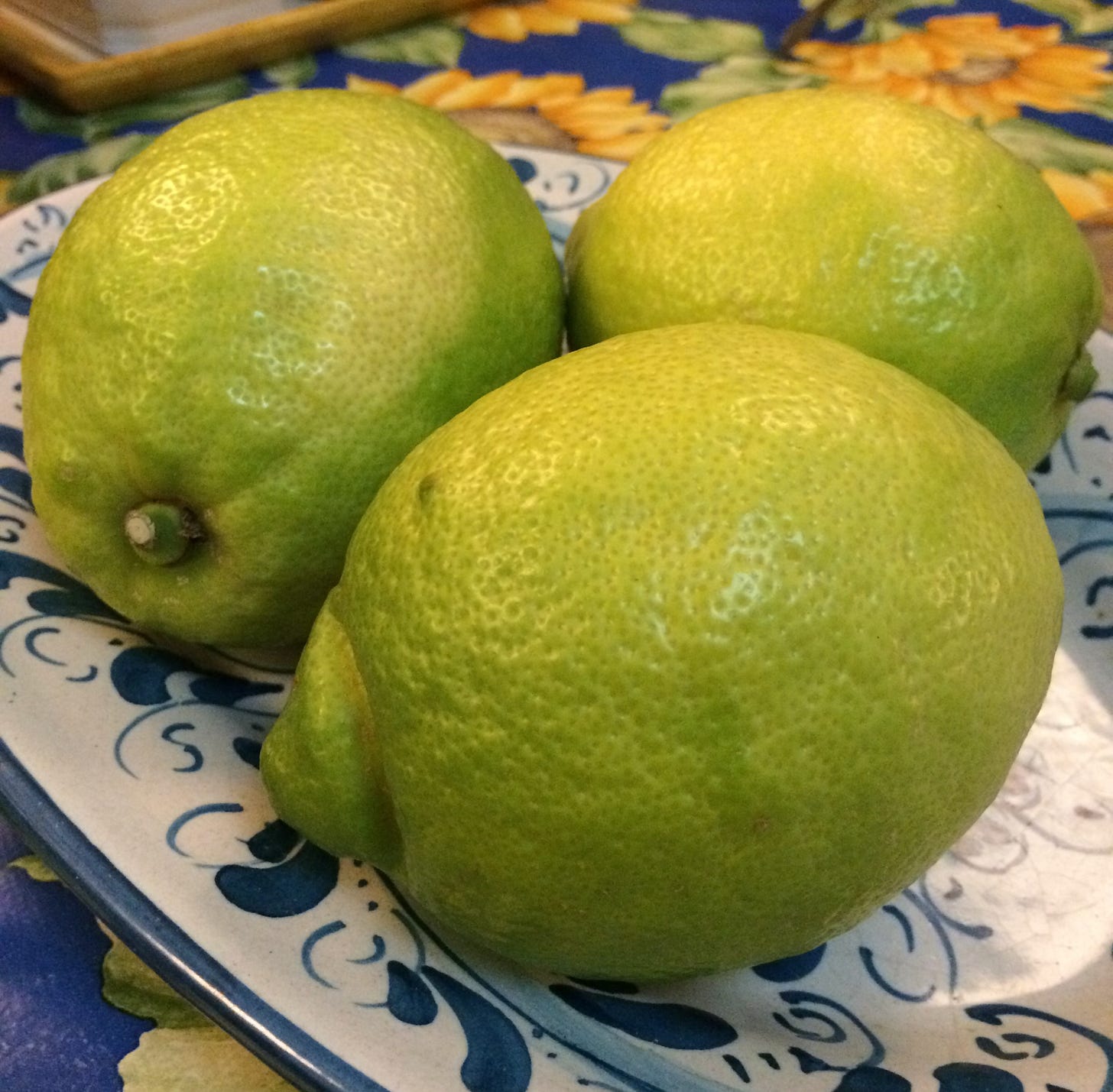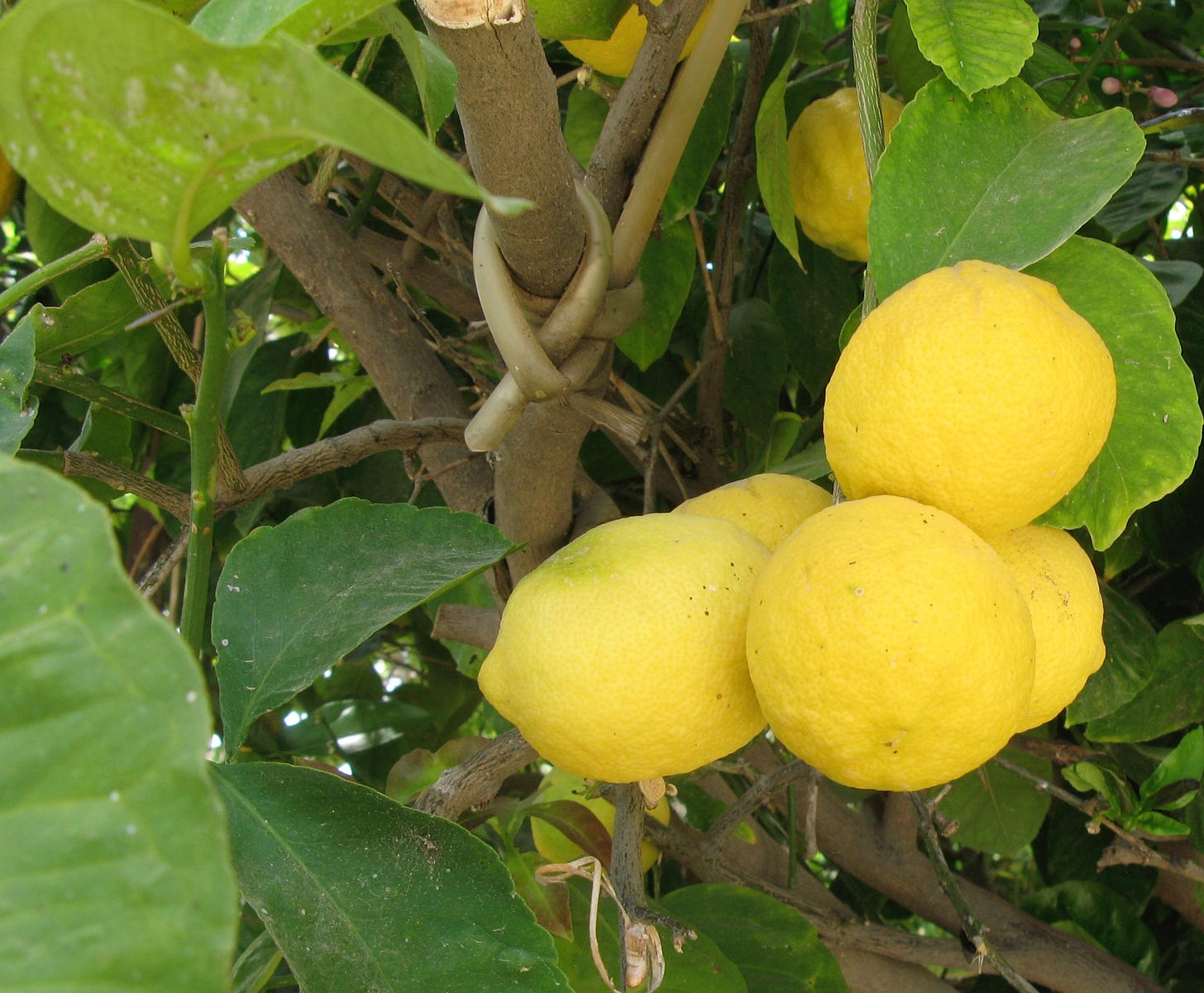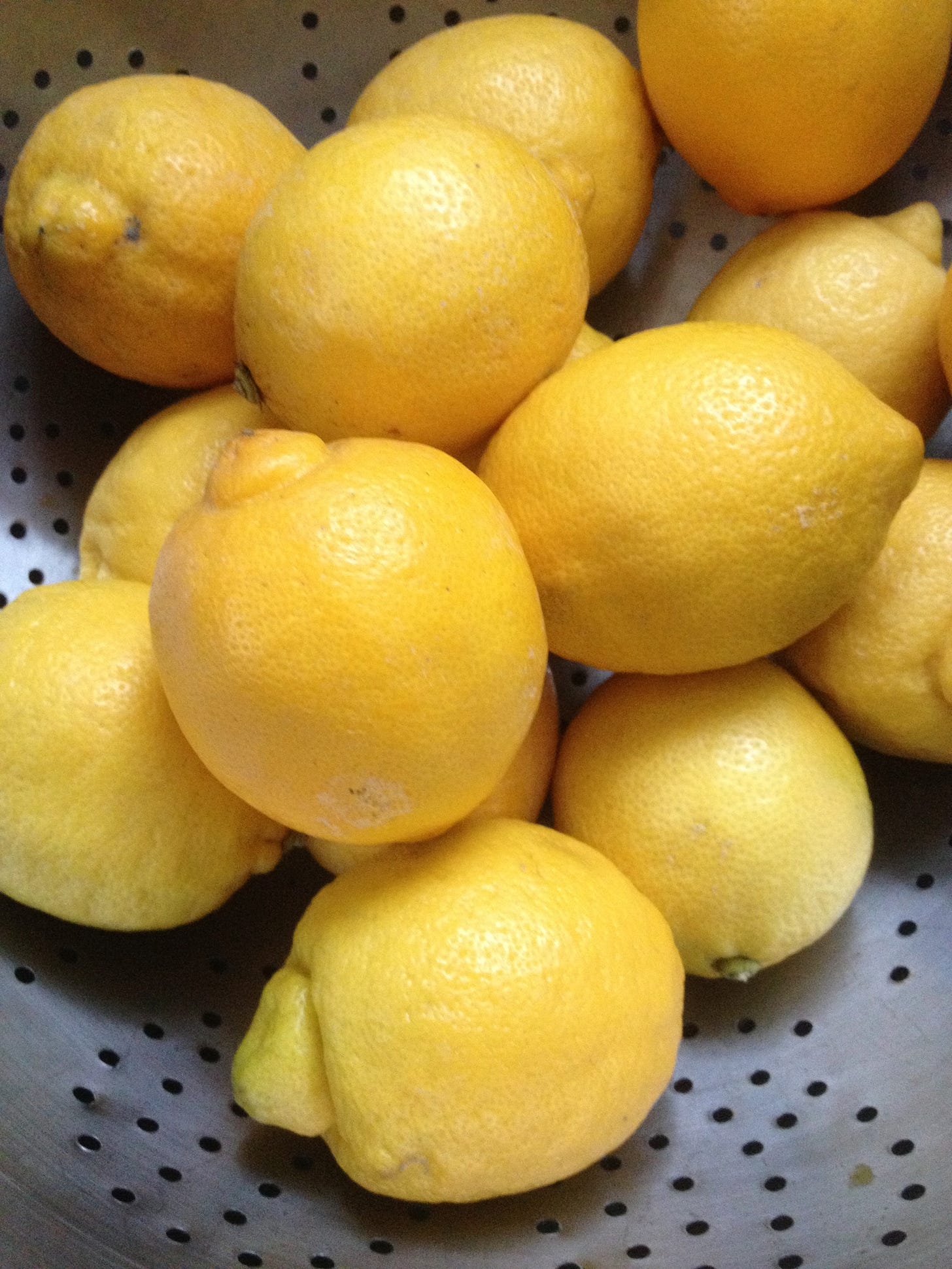A Lemony Spring
Sicilian lemons, probably femminello
Lemons are one of several fruits that know no real season, especially not for consumers, although lemon farmers might contest that. But here in the northern hemisphere, at least, lemons are available right the year round. Proof of that I think is in the fact that few cooks, placing orders, ever say more than “oh, and get me a couple-three-four lemons too.” Nothing specific about that: A lemon is a lemon.
And yet in some parts of the world, lemons are respected as the miracles of flavor that they really are, bringing brightness and zing to everything they touch, sweet or savory or in between. In Italy, cooks look for the femminello lemons from the eastern part of Sicily or the Amalfi lemons that grow on steep terraces hanging over the Gulf of Salerno. In the south of France, it’s the citron de Menton that connoisseurs crave. And small, green Adalia lemons are prized in Egypt where they’re sometimes called Egyptian limes—even though they’re truly lemons, like the similarly small, green Shirazi lemons from Iran.
Lemons growing on the island of Crete
To uncover the fascinating story of Italian lemons, I turn to Helena Attlee’s The Land Where Lemons Grow, a title suggested by Goethe’s song, “Kennst du das Land/Wo die Citronen blühn?”. The Citrus genus, as Attlee, a British garden writer, describes it in chatty but meticulous detail, is the largest and most confusing genus in the entire world of fruit. Citrus species of any kind—lemons, oranges, mandarins, citrons, grapefruit, tangerines, calamondins, yuzus, and even lesser-known varieties--mutate and hybridize spontaneously with any other member of the vast genus. The most ancient species are pomelos (Citrus maxima, originally from Malaysia), mandarins (C. reticulata, native to China), and citrons (C. medica, which apparently come from the slopes of the Himalayas). From these three, and their multiple crosses with each other and with their offspring, are derived all other citrus, including all the familiar lemons piled up in supermarkets and corner shops alike all across North America. “Whenever citrus trees are gathered together, whether in open ground or the shelter of a limonaia,” Attlee writes, “they cross-pollinate and over time new varieties develop that are peculiar to their setting.”
Lemons in Maine, probably Eurekas from California
But whatever the lemon you pick up to squeeze over your grilled salmon for supper tonight, chances are it will be a cultivar of C. limon called Eureka from California, where almost all the fresh lemons in American markets are grown and where most of the lemons are Eurekas. In the supermarket, however, a lemon is not a Eureka, but simply a lemon, nothing more.
And what, you might ask, would the world’s kitchens be like if it weren’t for lemons? How would we add such freshness, such a balance of sweetness and acidity, to the most common plates of the day?
We wouldn’t have Marcella Hazan’s famous chicken roasted with two lemons tucked in its cavity, the lemons first softened by rolling, then pierced with a skewer in several places. When you carve the chicken at the table the juices of the lemons, which have shriveled inside the bird, run out to mingle with the chicken juices and make a lemony sauce.
Or the quick and easy pasta dish we make when unexpected guests arrive for supper--whisking a quarter-cup of lemon juice into a half-cup of warm melted butter, pouring it over the drained pasta and garnishing with chopped basil or arugula, grated bottarga, and a sprinkle of grated lemon zest and toasted breadcrumbs on top.
Or the simplest and most delicious of salad dressings that I learned years ago from a Palestinian friend: Use the back of a spoon to crush a chopped clove of garlic with a half teaspoon of salt in the bottom of a salad bowl, then spoon in three big tablespoons of your finest extra-virgin olive oil and a tablespoon of freshly squeezed lemon juice. Stir vigorously and toss in your lettuce, cucumber, spring onions, whatever. Since I was shown how to do that, I’ve almost never dressed a salad with anything else.
Or the marvellously restorative Greek chicken soup with avgolemono, which you could add to almost any broth to give it substance: beat up a half-cup of lemon juice with two or three egg yolks, then temper with some hot chicken stock until you can stir it right into the soup.
Or the Spanish style of roasting chicken quarters with loads of garlic, loads of olive oil, and loads of lemons chopped into eighths, then stirred right into the roasting pan with the chicken and garlic, plenty of salt, and roasted at 375º until done.
What else can lemons offer? What not?
Keep reading with a 7-day free trial
Subscribe to On the Kitchen Porch to keep reading this post and get 7 days of free access to the full post archives.






